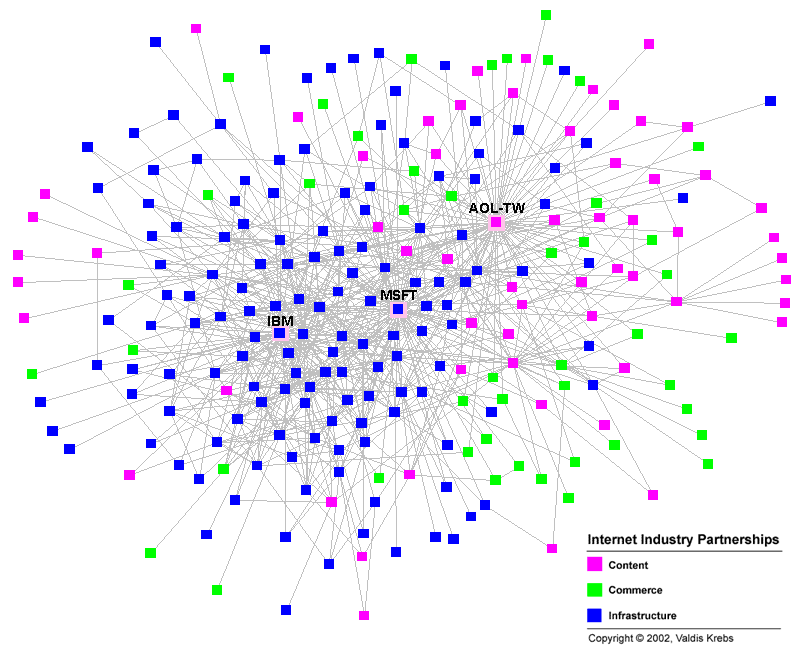 |
Business Ecosystems
Each node in the network represents a company that competes in the Internet industry. Two companies are connected with a grey line if they have announced a joint venture, strategic alliance or other partnership. This map shows a subset of the total internet industry -- 250 companies -- during the period from 1998 to 2001.
Many companies have a few partnerships, a few companies have many. The industry is dominated by several 'hubs' -- companies with bridging ties that connect the unconnected. Prior to 2002, the best positioned companies in this network of partnerships were: Microsoft, AOL-TimeWarner and IBM.
These industry visualizations demonstrate the forces that organizations exhibit upon each other in complex, interconnected economic systems -- business ecosystems. The data is gathered from various public sources and includes data on business partnerships such as strategic alliances and joint ventures.
We can also measure the map and determine which nodes are well positioned. A well-positioned company will be able to learn about, adapt to, and influence what is happening in the industry. These measures illuminate the competitive advantage of 'being in the right place' in the network of information, knowledge, and resource exchanges. In a networked economy/ecosystem, the player with better connections to diverse knowledge and resources has a great advantage.
The golden rule of Real Estate also applies to business networks: "Location, Location, Location!"
A well connected node...
- hears about, and understands, what is happening in the network before others do
- influences others through direct and indirect ties
- acts a broker of key information and knowledge between various parts of the network
- combines information, knowledge and ideas gathered from various parts of the network to develop innovative products and services
More musings on complex business ecosystems are available in my article in the Feb. '96 issue of Esther Dyson's industry publication, Release 1.0.
Home | Software | Training | Consulting | Case Studies | Blog | Contact
Copyright © 2002, Valdis Krebs
